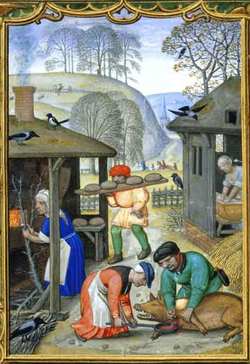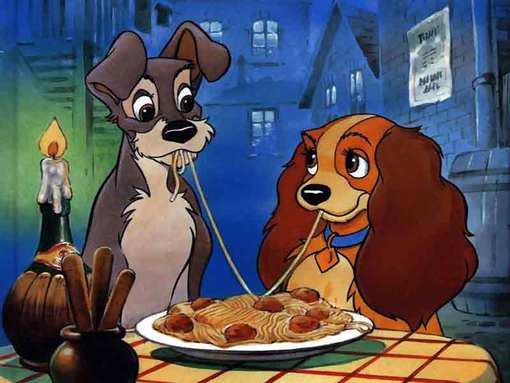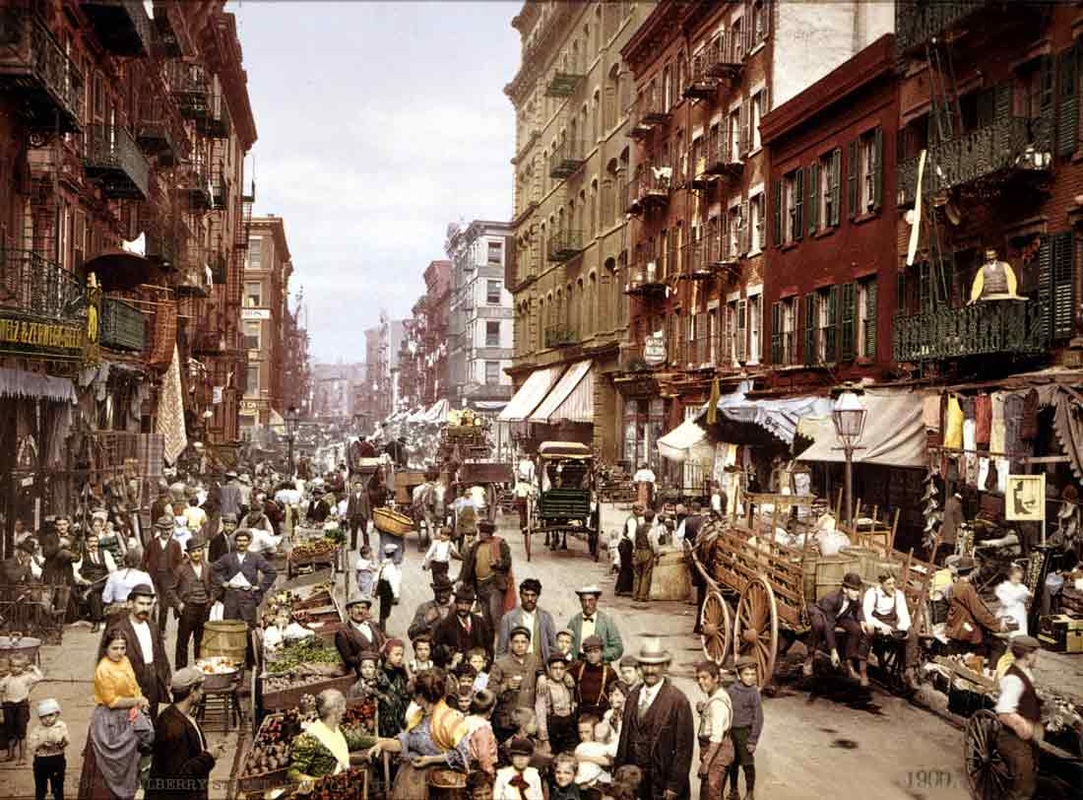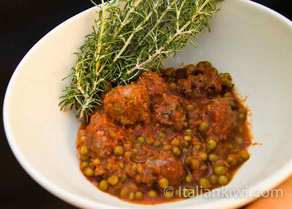|
There are many things that are familiar to Italian-Americans eat in the States that just don't exist in Italy. Spaghetti and Meatballs is an iconic dish... handball sized spheres of ground beef (sometimes with pork or veal added) with onions, breadcrumbs, garlic and spices. Either fried in olive oil or baked in an oven to browned, meaty perfection. Often they are thrown into a tomato sauce as it cooks for hours, creating the legendary Sunday Gravy I wrote about in another post. Throw a couple of meatballs (or 3 or 4) on a plate next to a good helping of spaghetti topped with "marinara" and you'll make anyone happy. Well, you won't be able to find it in authentic ristorante in Italy. You will find spaghetti. And you will find meatballs--named polpette--but they will never be on the same plate. You see, Italians never eat meat with their pasta, unless it's mixed into the sauce as in a Bolognese or ragu sauce. The first course in a meal is called Antipasto (literally, before pasta) where you might have an assortment of cold cuts, prosciutto, cheeses, olives, bruschetta and the like. Next comes the Primo (first course) which can contain risotto, lasagna, polenta soup or pasta. The Primo never contains meat. This is when you would have your spaghetti. If it's on the menu at all, polpette (meatballs) would be listed under the Secondo course, along with sausage, pork, steak or beef (including stews), turkey, chicken or types of fish. If you want a side dish, you wouldn't ask for a side of meatballs, you'd look at the Contorno (literally, the edge or side) part of the menu and select from an assortment of vegetable dishes. For a salad select from the Insalada listed. You can try this, though... Order a spaghetti as your Primo and then order a Secondo of polpette. Now all you have to do is see if the chef can deliver your Primo and Secondo at the same time. Put the meatballs on the pasta plate and presto--you have your spaghetti and meatballs! Truth be told, don't worry too much about the order of courses in Italy. In most places you are going to get what you want by ordering ala carte off the menu anyway... If you want only pasta, just order that and forget about the Secondo. It's rare to find a restaurant that forces you to order all the courses on the menu. I don't think I saw a single prix fixe menu (where the entire dinner is included in the price) in all of Italy.  Harvest time comes and it was the time for hunting, putting up sausages and prosciutto, harvesting wheat, turning it into flour and making bread. It was a village effort. Harvest time comes and it was the time for hunting, putting up sausages and prosciutto, harvesting wheat, turning it into flour and making bread. It was a village effort. The reason why Italy never evolved into our way of eating is that they didn't have to.... or rather, they had to do it the other way. For the contadina (peasant/farmer) in Italy, most meals were without meat anyway, until and IF something was being slaughtered. It was a seasonal thing too.... meat eating was enjoyed during holidays in Italy--no wonder they were called (and still are) Feast Days. Some meats were only available village-wide if someone donated his buffalo or pig in a type of bartering system... in the same way that the miller would grind everyone's crops of wheat into flour for them, and the baker would do communal baking for the entire village periodically. No cash exchanged... everyone shared their harvest or special skill. So if you had your season's supply of rice or corn meal (for polenta) or flour (for pasta), this was your staple meal. When meat arrived, it was thought of as a separate thing... to stand on its own. And nothing was wasted... the pig was made into sausage, roasts, ribs, and even the pig feet, ears, brains, nose and head were special dishes to enjoy. Add to this the randomness of hunting for birds and game and you have even more uncertainty of having a decent protein on your table. When Italians emigrated to America it truly was a golden life when compared to the war and poverty back home. In the late 1800s when Italy became one nation, most of the resources went to the north and Rome, leaving the southern regions in terrible shape. When the immigrants came to America, they moved into low quality housing in tenement apartment blocks. In these neighborhoods they at least had a chance to survive--and eventually--flourish. And they could finally afford to buy things in abundance--meat, tomatoes, ready-made sausage, cheese, deli meats--and all at their corner market or from a street vendor just outside their front door. (These vendors were also Italian immigrants trying to make their way in America.) They didn't have to wait as they did back in their home village to slaughter, or to bake, or to make the cheese, or the grind the flour. Everything was available whenever they wanted it. So, they started putting courses together into one big bowl, often the only bowl they could afford. My father talked of this family style of eating, and used a Molfetese dialect word that took me quite a while to find the actually Italian word. Phonetically, he called it "Bah-BOOK-eeya" . The real word is papocchia or papocchio (in Puglia, the "P" is easily heard as a "b" sound), which can be defined as "a mess" or "all messed up". According to Dad, this Molfetese word meant "everything in one pot, all mixed up"-- or, "a mess" as opposed to the proper way to eat meal courses back in Italy. That's the way his growing family ate in their American home in Hoboken, N.J. As Dad described the scene at their kitchen table, he, his sisters, brothers and parents were all digging into meats and pastas and vegetables all cooked and mixed together and eaten from a big bowl or platter in the middle of the table, containing the entire, single course meal. A large loaf of bread was passed around and pieces torn off. Dad described their early days before they had individual plates, reaching with their forks into the large Bah-BOOK-eeya bowl. His Dad served wine he made himself from grapes bought from a fruit cart vendor. In a few years, Dad and his "kid brother" had their own cart selling fruits and vegetables to seamen coming from the many ships docked in Hoboken harbor... a cart pulled by the only horse they could afford--a "three-legged horse" as Dad called him (lame in one leg). We have to remember that over 4 million (mostly) southern Italians came to American within a short 40 year window around the turn of the last century. There was a lot of talent in that group of people. Some had specialty skills, like my Grandfather (tailor) or other skills, but most were listed on the ships' manifests as "laborer" or "farmer". Of these, many knew some sort of cooking, butchering, smoking or baking. The best of these began selling their wares from carts then gradually opened their own shops. This is where a new type of village began--the Italian-American neighborhoods. Clustered in these "Little Italys" were the Formaggeria for cheese, the Panificio (bread bakers), the Pasticceria (pastry & cakes), Macelleria (butchers/deli), Pescheria (fish monger), Frutta e Verdura vendors (fruit and vegetable) and more. They could have what they wanted, when they wanted it. And it was cheaper too... In Italy most of a family's income went toward food to eat--especially in the days when the taxes on flour and bread skyrocketed. In American, only about 1/4 of a family's income went toward food. Big improvement in their quality of life. For the first time, they had some expendable income, but most chose to save and hope. As my Grandmother used to tell me when I first started my own business, "Pay yourself first". So there are many reasons why you won't find spaghetti and meatballs or Chicken Parmesan in Italy. You might find a chicken dish as a Secondo and you will find a baked pasta dish or two as a Primo but not merged into one single casserole dish. Funny... just last night for dinner Lisa made a big casserole of baked Chicken Parmesan. Enough for two meals in our 3 person famiglia. So we carry on the Italian-American tradition... and now understand why we do it. I will admit that once in a while, I'll purposely serve the pasta first and plate the meats separately... as a nod to our real Italian heritage.
You might also be interested in...
0 Comments
Your comment will be posted after it is approved.
Leave a Reply. |
Categories
All
Archive
June 2024
|






 RSS Feed
RSS Feed
